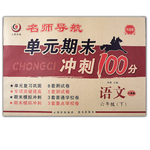题目内容
cold, or if you get sick, should you follow the old saying, "feed a cold and starve a fever?" And what about that fever? Should you take medicine to reduce your temperature, or is it better to let the body treat the
fever itself? Everyone seems to have an answer. But is popular wisdom valuable?
Doctor Nelson knows a lot about cold and flu seasons. Nelson says research may be just starting to
provide proofs for long-held beliefs. For example, scientists for years were against the idea that getting
cold and wet might cause colds or flu. But recent studies have shown that cold temperatures cause stress
on the body, and that stress can create conditions more inviting to viruses. So maybe it does make sense
to wrap up warmly before going outside.
And what about feeding a cold and starving a fever? Nelson says if you have a cold and are hungry,
you should eat. But a fever, especially a high one, suggests a more serious problem. He says people are
usually not hungry when they have a high fever. Eating might even make a person sick. But drinking
enough water is important. A fever easily makes the body lose water.
Finally, when should you treat a fever? Nelson says a fever should be treated if it stays at
40℃ or above for a day or more. A high temperature can damage brain cells. The doctor also believes in
treating a fever if it prevents a person from sleeping.
Medicine like aspirin, for example, can be used to reduce pain and fever. But aspirin should not be given to children because it can cause serious problems.
B. is now trying his best to provide proofs for long-held beliefs.
C. doesn't think it necessary to see a doctor immediately if a person has a temperature of 40℃
D. doesn't think it necessary to treat a fever even if it prevents someone from sleeping.
B. drink enough water
C. try to eat something
D. take some exercise outside
B. Whether the old advice about preventing a cold is valuable.
C. What the medicine , aspirin, is used for.
D. Why people should eat when having a cold.
B. it is easier for people to catch colds when their bodies are stressed.
C. some old advice about preventing colds doesn't make any sense.
D. the idea that getting cold can cause flu was proved true years ago.

 名师导航单元期末冲刺100分系列答案
名师导航单元期末冲刺100分系列答案
| |||||||||||||||||||||||||||||||||||||||||||||



